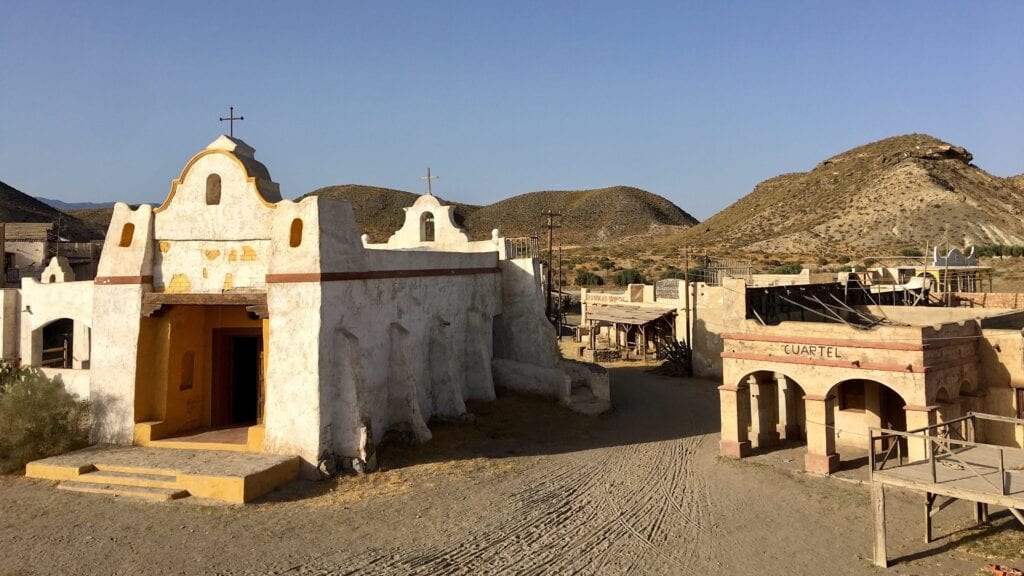The Costa de Almería is a 200km stretch of coastline in the south-east of Spain. It is home to the popular resorts of Mojácar and Roquetas de Mar together with less well-known destinations such as Vera, Carboneras, Aguadulce and Almerimar. Most visitors to the region arrive at Almería Airport which is located just 9km east of the city of the historic city of Almería. The region’s main attractions include guaranteed sunshine, semi-deserted beaches, charming coastal towns and proximity to the Mini-Hollywood theme parks in the Tabernas Desert and the UNESCO Biosphere Reserve of Cabo de Gata-Níjar Natural Park.
Located in the foothills of the Sierra Cabrera, some 80km north-east of Almería Airport is the attractive holiday resort of Mojácar Playa. The resort has a range of accommodation including the Parador de Mojácar, some excellent beaches, a fine selection of international restaurants and a lively nightlife. In the hills just 2km above Mojácar Playa is the white-washed village of Mojácar Pueblo which is one of the most popular destinations on the Costa de Almería.
The Main Excursions From Mojácar Playa And The Other Resorts Of The Region Are As Follows:
Mojácar Pueblo
Mojácar was a trading post for the seafaring Phoenicians and Carthaginians before being occupied by the Romans and Moors. It became part of the Kingdom of Castile in 1488. Nowadays this mountain village with its quaint streets and terraces has quite an Arabic flavour about it. The best way to explore the village is on foot beginning at the viewpoint of the Castillo de Mojácar. This is the highest point of Mojácar Pueblo from where visitors are treated to magnificent views over the Mediterranean coastline.
Further down the hill, in front of the Iglesia de Santa María, is the statue of the Mojaquera which is a lady wearing typical head-covering dress and carrying a water container. Going down another level takes you past the old cemetery which leads into the street which originally provided a binary wall protecting the upper part of the village. In this area there is a good selection of shops, bars and street cafes where you can relax and watch the world go by.
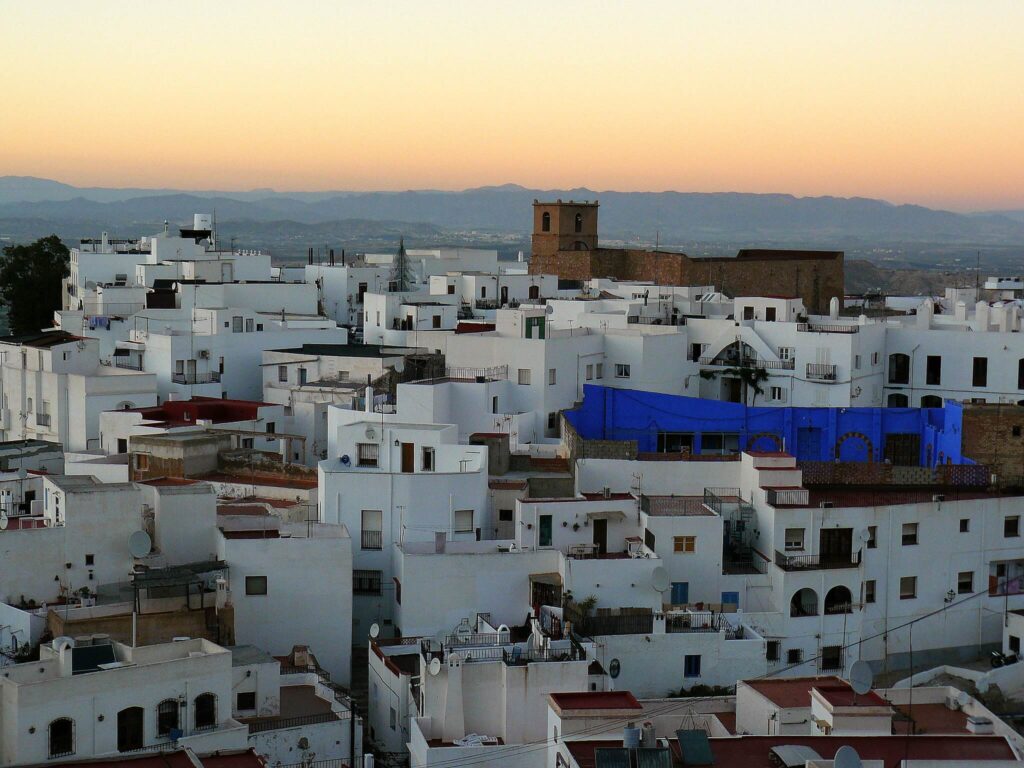
Accommodation within the village consists of small hotels, apartments, converted farmhouses and basic studios, most of which are available year round for long or short term occupation. The bustling village market takes place every Wednesday where local produce can be sampled and purchased. Within the same area is the Town Hall, famous for its magnificent old tree brought over from the Americas and from here it is a pleasant walk to the Puerta de la Almedina, an archway to the village displaying the coat of arms of Mojácar. Close by is the maze of tiny streets of the Jewish Quarter.
The symbol of Mojácar, thought to be 4500 years old, is an Indalo man holding an arc in outstretched arms. It is said to bring good luck and protection and is painted on many buildings in the village. Once you have reached the lower level of the village there is no need for despair at the thought of getting back up to the top as there is a local bus to take you there.
The nightlife starts with the most fabulous sunsets covering the village with a pink glow. The candlelit restaurants with background music of Arabic origin mixed with international strains sets the mood to try the many gastronomical delights, several of which come from the sea, but also include stews, savouries and soups, all prepared in true Moorish style. Street squares full of charm host the many open air concerts, shows and exhibitions attracting all age groups and nationalities.
Road Trip Along the Costa de Almería
If you have a car you might like to take a drive south from Mojácar to explore some of the other tourist destinations which make up the Costa de Almería. The main places you’ll come across are as follows:
Vera Playa: Just 15km north of Mojácar is Vera Playa which is best known for its attractive beach where a section is partly reserved for nude bathing. The resort is also home to the Parque Acuático Vera which is a popular waterpark.
Carboneras: Heading south for 28km along the coast road from Mojácar you’ll come to Carboneras which is a great base from which to access almost 20km of sandy beaches running along this coastal strip.
Agua Amarga: Approaching the Cabo de Gata Natural Park is the pretty fishing village of Agua Amarga which is a personal favourite of mine. It has a great beach and some lovely places to stop for lunch.
Aguadulce: Just west of Almería along the impressive coast road is the tourist development of Aguadulce which has one of the region’s most popular beaches thanks largely to its proximity to the city. The resort boasts an impressive marina which is central to its nightlife and attracts mainly Spanish visitors.
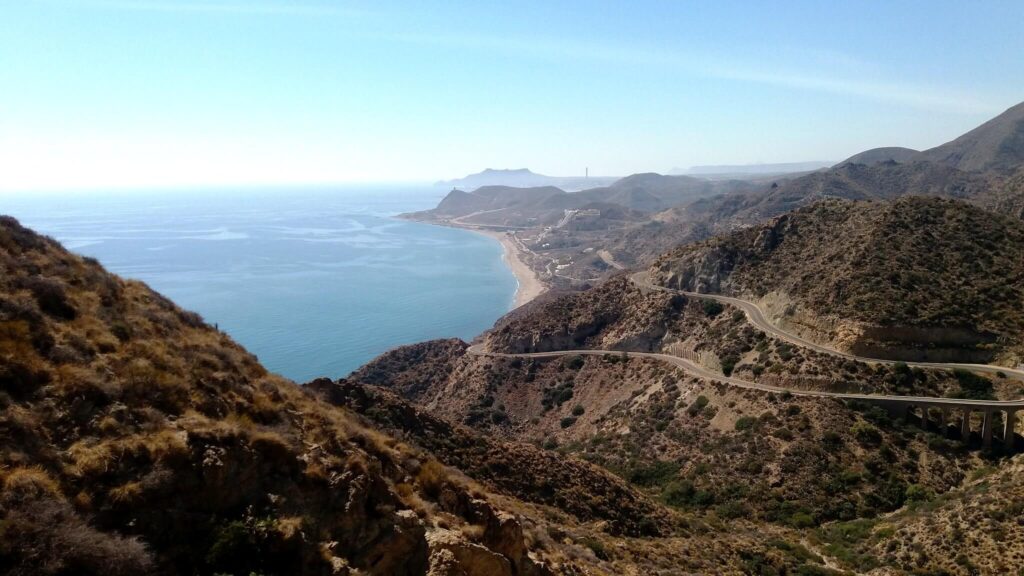
Roquetas de Mar: Just 8km further on is Roquetas de Mar which is the area’s main holiday destination. It’s a fairly relaxed resort with a great beach which is especially popular with Spanish tourists whilst still attracting package tourists from Northern Europe.
Almerimar: To the south-west is Almerimar which is a purpose built resort with a sizeable marina, plenty access to watersports and proximity to a popular golf course.
Sabinar Entinas Nature Reserve: Located on a 15km stretch of protected coastline between Almerimar and Roquetas de Mar, this is an important Nature Reserve which is very popular with birdwatchers.
Almería City
The historic city of Almería is the region’s provincial capital which dates back to Phoenician times. A half day trip from Mojácar and the other resorts of the Costa de Almería is highly recommended. The city’s main attraction is the Moorish Alcazaba fortress which dates back to 955 when it was built under the rule of Abd-ar-Rahman III. It was the 2nd largest citadel in Moorish Spain (after the Alhambra Palace) but remains relatively unknown on the tourist circuit.
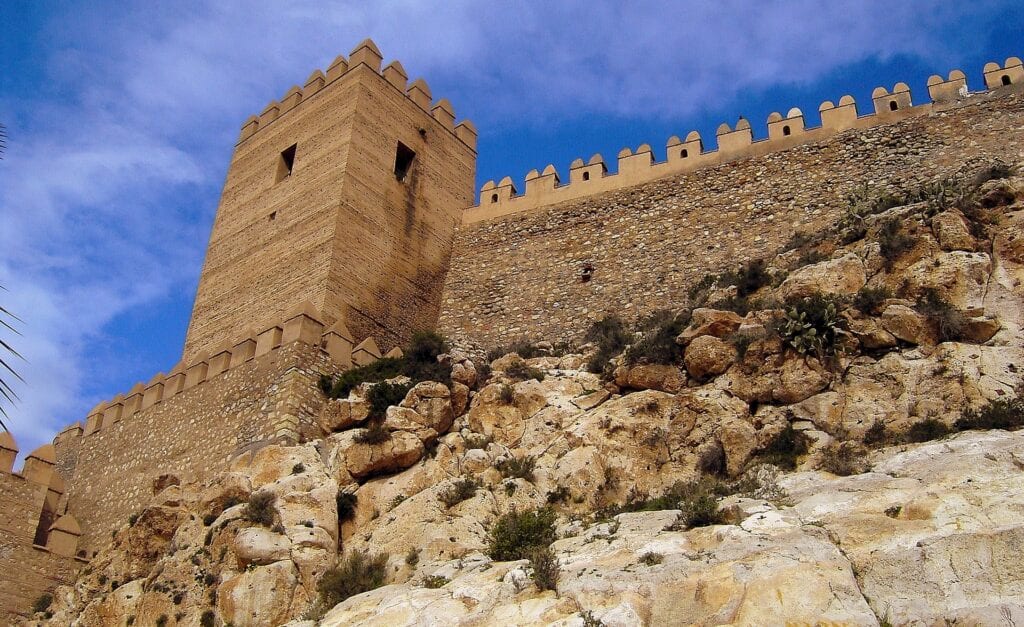
Another major attraction is Almería Cathedral in the Old Town which was rebuilt in Gothic and Renaissance style after being destroyed by the Almería earthquake of 1522. The Museum of Almería (Carretera de Ronda, 91) is an important archeological museum with exhibits dating back to the Phoenicians, Carthaginians, Romans and the Moors. Another fascinating museum is the Museo Refugio de la Guerra Civil (Plaza Manuel Pérez García, 1) which is housed in the tunnels which were built to protect the civilian population during the Spanish Civil War.
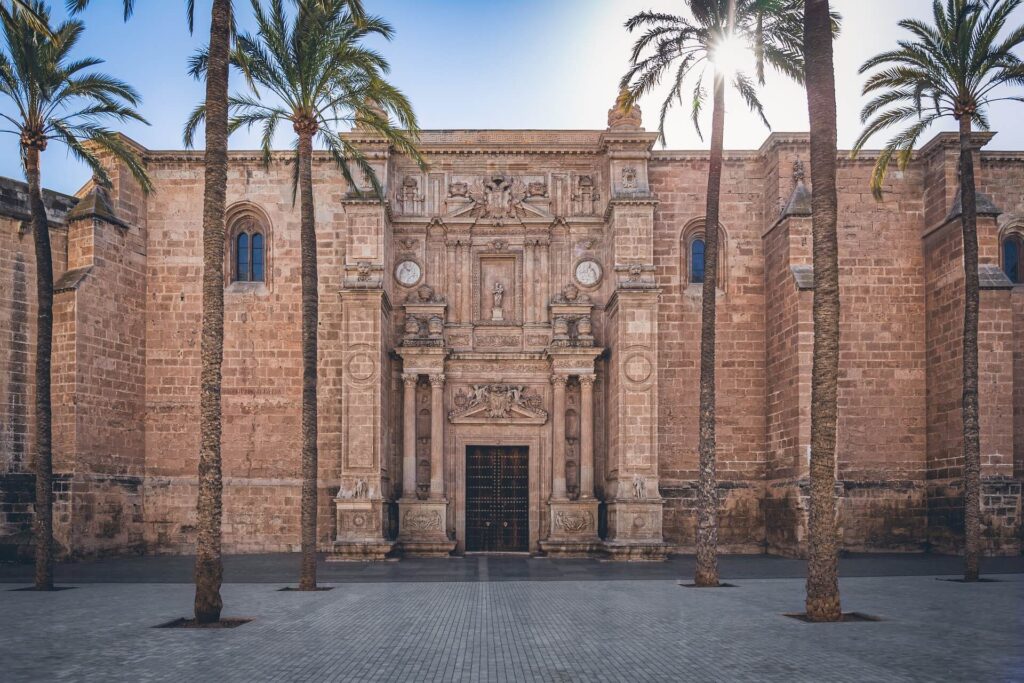
An ideal place to stop for lunch in Almería is at one of the tapas bars around the historic Mercado Central to the north of Paseo de Almería. This place has been the city’s main marketplace since the 1890s and is a great place to rub shoulders with the locals amongst the many food stalls.
Cabo de Gata Natural Park
Some 30km to the south-east of Almería City is the UNESCO Biosphere Reserve of Cabo de Gata-Nijar which is a popular destination for hiking, camping and birdwatching.. The natural park is home to some spectacular volcanic landscapes, hidden coves and beautiful beaches. The region’s main town is San José which is worth a stop and provides access to Playa de los Genoveses which is the Cabo de Gata’s best beach. Further north are a number of quaint fishing villages which lead to the charming village of Agua Amarga and the relatively unspoilt Playa de los Muertos.
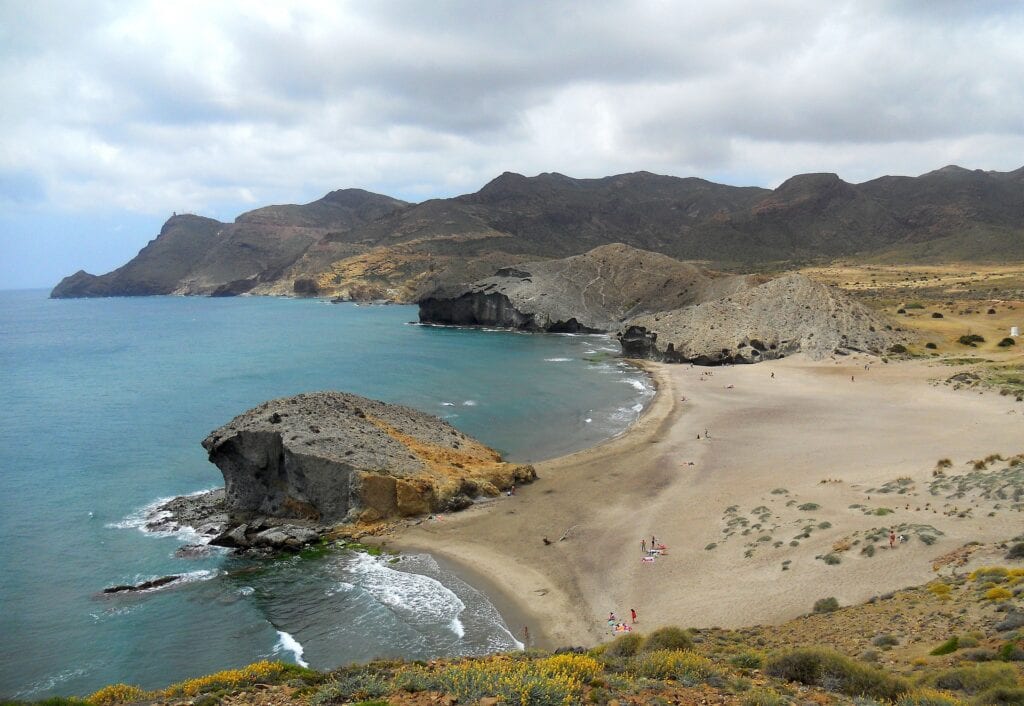
Alhambra Palace in Granada
The Alhambra Palace in Granada has often been described as the “Jewel of Moorish Spain“. It is a UNESCO World Heritage Site and one of Spain’s most visited tourist attraction which lies just 190km to the north-west of Almeria City. Historically the Alhambra served as a palace-fortress for the Nasrid Dynasty during the 13th and 14th centuries. After the Christian Reconquest of Moorish Spain the complex fell into disrepair for centuries. It was only after the publication of Irving Washington’s ‘Tales of the Alhambra‘ in 1832 that Spain realised the significance this forgotten treasure.
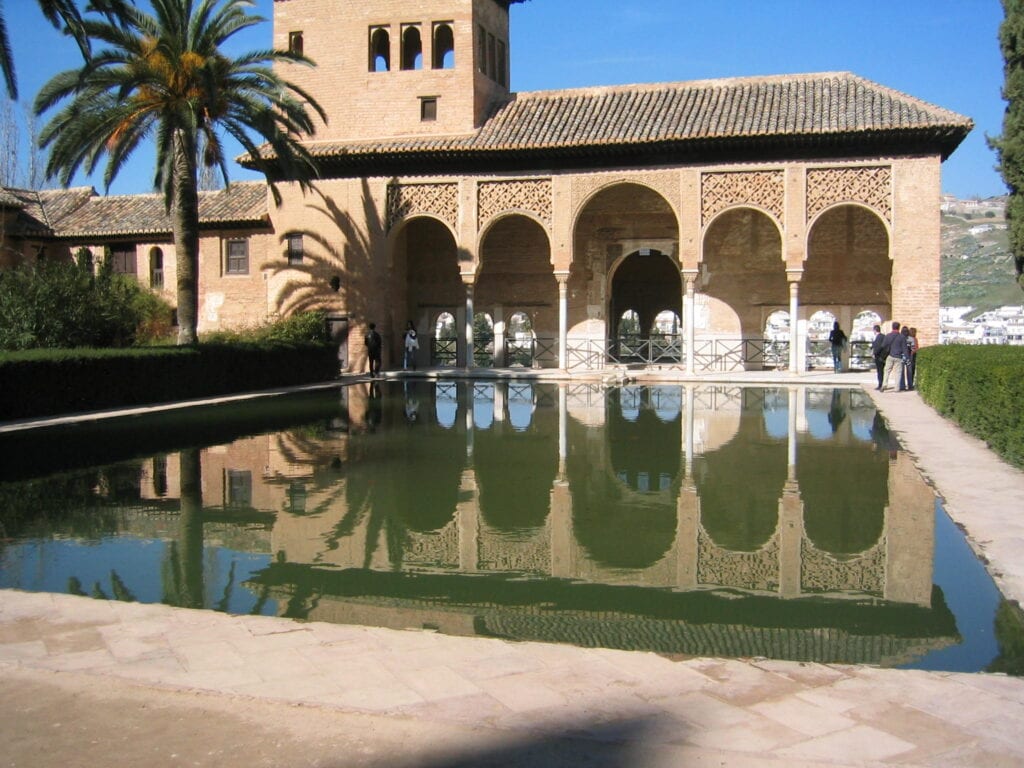
The Alhambra Palace became a national monument in 1870 and was listed by UNESCO as a World Heritage Site in 1984. Visitors to the Costa de Almería who plan on taking a day trip to the Alhambra Palace would be advised to either book a group/private excursion or order Alhambra tickets before travelling to Spain.
Western Theme Parks of the Tabernas Desert
The semi-arid landscapes of the interior of Almería Province have long served as an ideal destination for film makers such as Sergio Leone who filmed his spaghetti westerns here in the 1960s. Best known productions include ‘A Fistful of Dollars’, ‘For a Few Dollars More and ‘The Good, the Bad and The Ugly’ which all starred Clint Eastwood. The area was also used for filming scenes from Lawrence of Arabia (1962) together with Indiana Jones and the Last Crusade (1989) and more recently, Exodus: Gods and Kings (2014). Film sets used on some of these films have been converted into the three Western theme parks of Fort Bravo, Oasys and Western Leone which are collectively marketed as ‘Mini-Hollywood‘. They are located in the Tabernas Desert some 50km north of Almería City and 83km west of Mojácar and are popular attractions for holidaymakers from the resorts of the Costa de Almería.
